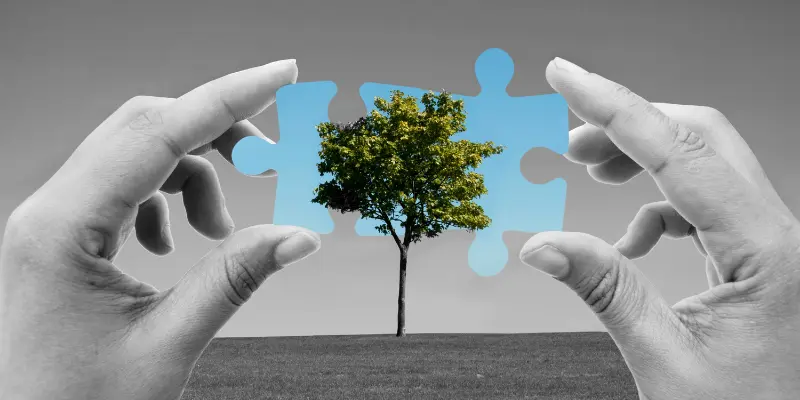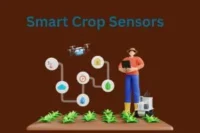What Is Cultivating Plants? Rare Insights Into Nature’s Most Powerful Practice
Published: 24 Apr 2025
To cultivate plants is to participate in one of the oldest and most meaningful relationships humans have ever had with the Earth. It’s more than just growing greenery—cultivation is the careful art and science of nurturing life from soil, seed, and sunlight. For over 12,000 years, plant cultivation has been the heartbeat of civilizations, feeding families, healing bodies, and painting our world with color and purpose. Whether it’s a single flower on a windowsill or a vast field of wheat swaying in the wind, every cultivated plant tells a story of patience, purpose, and quiet hope.
So, guys, without wasting time, let’s jump into the article to learn What Is Cultivating Plants? Rare Insights Into Nature’s Most Powerful Practice
1. Cultivation as a Climate Solution
Plant cultivation, when done right, can act as one of the most powerful tools for climate resilience. Sustainable cultivation practices—like agroforestry, no-till farming, and crop rotation—can capture carbon from the atmosphere, rebuild degraded soil, and reduce global warming.

Key Fact:
Healthy soil can store up to three times more carbon than the atmosphere. Cultivating plants with soil health in mind could change the course of climate change.
2. Soil Microbiome: The Hidden Engine
Plants don’t grow alone—they rely on billions of microscopic organisms in the soil. These microbes help break down nutrients, form symbiotic relationships with roots (like mycorrhizae), and even protect plants from disease.
Insider Tip:
Adding compost or biofertilizers doesn’t just feed plants—it feeds the microbes that grow the plants. That’s the real magic.
3. Plant Communication and Health
Through complex underground fungal networks (nicknamed the “Wood Wide Web”), plants can send signals, share nutrients, and warn each other about threats. Over-cultivation or chemical inputs can disrupt these natural connections.
Lesser-Known Insight:
Plants that grow in biodiverse systems with less human interference often have stronger natural defenses and more nutrient-rich yields.
4. Smart Watering Practices
Overwatering is the #1 killer of houseplants and garden crops. Most people water on a schedule, but plants need watering based on soil moisture, not time. Root rot, nutrient leaching, and stunted growth often come from excess watering, not too little.

🌡️ Pro Tip:
Use your finger, a soil moisture meter, or simply observe the leaves. Let soil almost dry out before re-watering—especially for citrus, succulents, and herbs.
5. Plants That Regrow Themselves
Many plants, especially perennials like lemongrass, turmeric, and mint, don’t need to be replanted every year. They regenerate from roots, rhizomes, or underground runners. This reduces labor, water use, and environmental impact.
Underrated Insight:
Perennial food crops can form self-sustaining mini-ecosystems, saving time and costs for small farmers and urban gardeners alike.
6.Leaf Color as a Health Indicator
Discoloration in leaves isn’t just aesthetic—it’s a language of distress. Yellow leaves often signal nitrogen deficiency, while purpling can mean phosphorus stress. Brown edges may indicate too much salt or poor root oxygen.
Quick Code:
- Yellowing (older leaves): Low nitrogen
- Red/Purple tint: Cold stress or phosphorus lack
- Spotted/Burnt tips: Over-fertilizing or poor drainage
7. Nutrition in Cultivated vs. Wild Plants
Wild plants are often considered more “natural,” but intentionally cultivated plants can have higher concentrations of certain nutrients, especially when grown with enriched soil and good organic practices.
Surprising Truth:
Leafy greens like spinach or kale grown in compost-rich soil can have twice the magnesium and iron as their store-bought counterparts.
8. Stress for Stronger Growth
This is called “hormesis”—when small amounts of stress (like pruning, limited water, or mild cold) actually stimulate stronger growth, better flavor, and higher phytochemical content in plants.
Example:
Grapevines that grow under moderate stress produce sweeter, more flavorful grapes—which is why the best wines come from difficult soils.
9. The Crisis of Over-Cultivation
We often think cultivating more land equals more food, but it can cause soil degradation, biodiversity loss, and water depletion. The UN warns that 33% of the world’s soil is already degraded due to poor farming practices.
Better Practice:
Focus on regenerative agriculture—which improves soil while producing food: composting, mulching, cover cropping, and rotational grazing.
10. Cultivation Reflects the Grower
How you cultivate reflects how you live. A rushed, forceful grower may over-fertilize or overwater, while a mindful, patient grower learns to watch, wait, and understand the rhythm of nature.
Deep Truth:
The best growers don’t just grow plants—they grow with their plants.
Conclusion:
To cultivate plants is to touch the pulse of life itself—to witness transformation, to nourish, to create. It is a discipline, a healing art, and a sacred responsibility. Every leaf that unfurls, every fruit that ripens, tells you this simple truth: life responds to love.
In the end, cultivating plants is not just about food or beauty—it’s about becoming more human.
References
According to the Food and Agriculture Organization (FAO), sustainable cultivation methods such as agroforestry and no-till farming can significantly improve soil health and act as natural carbon sinks, aiding in climate resilience.
Here is the journal Article regarding What Is Cultivating Plants? Rare Insights Into Nature’s Most Powerful Practice
Finding Greener more Climate resilient ways of producing our food

- Be Respectful
- Stay Relevant
- Stay Positive
- True Feedback
- Encourage Discussion
- Avoid Spamming
- No Fake News
- Don't Copy-Paste
- No Personal Attacks

- Be Respectful
- Stay Relevant
- Stay Positive
- True Feedback
- Encourage Discussion
- Avoid Spamming
- No Fake News
- Don't Copy-Paste
- No Personal Attacks





